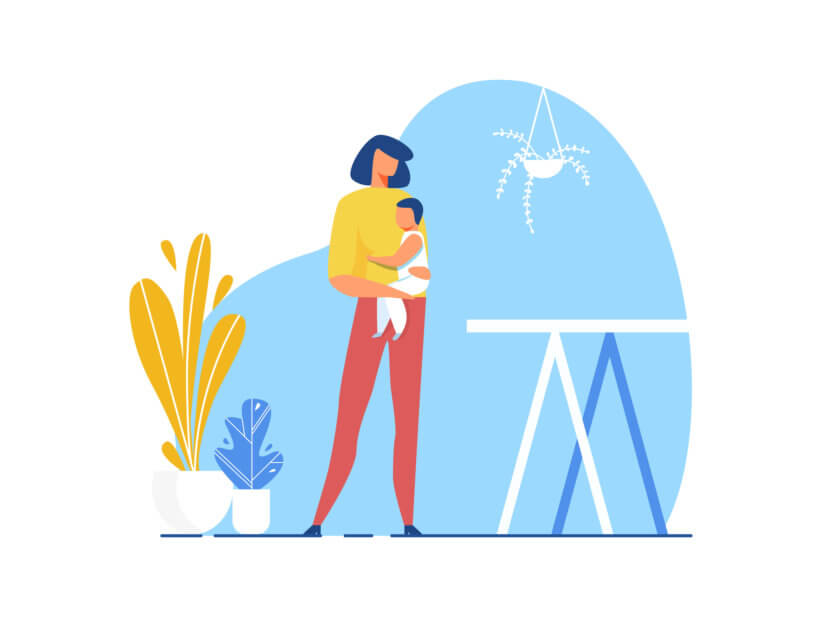My daughter, who we named Joy, was born at 23 weeks gestation in 2012. She weighed just one pound and four ounces, and was only 11 and three-quarters inches long. The reason for her premature birth was a condition I suffered from, called placenta percreta (a severe type of placenta previa) and both of us almost lost our lives. However, I am happy to report that today, more than three years after her delivery, we are both doing very well!
A premature baby is generally categorized as one that is born before 37 weeks gestation. A micro preemie, as my daughter was, is a baby born between 23 and 26 weeks gestation. Micro preemies suffer the most complications from their early birth, and also have the highest mortality rate of premature babies.
According to the Centers for Disease Control, in 2012, the year my daughter was born, preterm birth affected more than 450,000 babies — that’s one of every nine infants born in the United States. These premature babies will spend weeks or months hospitalized in the neonatal intensive care unit. According to the March of Dimes — an organization that strives to fund lifesaving research and programs and works to end premature birth, birth defects, and infant mortality — premature births are the number one killer of babies.
Not all premature babies experience complications, but being born too early can cause short-term and long-term health problems for preemies. Generally, the earlier a baby is born, the higher the risk of complications.
Problems to watch for
Some problems may be apparent at birth, while others may not develop until later.
According the Mayo Clinic, many premature babies will suffer from the following short-term complications:
Breathing problems. A premature baby may have trouble breathing due to an immature respiratory system. If the baby’s lungs lack surfactant — a substance that allows the lungs to expand — she may develop respiratory distress syndrome, because the lungs can’t expand and contract normally.
Preemies may also develop chronic lung disease known as bronchopulmonary dysplasia. In addition, some preemies experience prolonged pauses in their breathing, known as apnea.
Heart problems. The most common heart problems premature babies experience are patent ductus arteriosus — a persistent opening between two major blood vessels leading from the heart — and low blood pressure.
Brain problems. The earlier a baby is born, the greater the risk of bleeding in the brain, known as an intraventricular hemorrhage. Most hemorrhages are mild and resolve with little short-term impact. But some babies may have larger brain bleeding, which causes permanent brain injury, including cerebral palsy.
Temperature control problems. Premature babies can lose body heat rapidly; they don’t have the stored body fat of a full-term infant and can’t generate enough heat to counteract what’s lost through the surface of their bodies. If body temperature dips too low, hypothermia can result.
Gastrointestinal problems. Preemies are more likely to have immature gastrointestinal systems, leaving them predisposed to complications such as necrotizing enterocolitis. This potentially serious condition, in which the cells lining the bowel wall are injured, can occur in premature babies after they start feeding. Premature babies who receive only breast milk have a much lower risk of developing necrotizing enterocolitis.
Blood problems. Preemies are at risk of blood problems such as anemia and infant jaundice. Anemia is a common condition in which the body doesn’t have enough red blood cells. All newborns experience a slow drop in red blood cell count during the first months of life, but the decrease may be greater in preemies, especially if the baby has had a lot of blood taken for lab tests.
Metabolism problems. Premature babies often have problems with their metabolism. Some preemies may develop an abnormally low level of blood sugar (hypoglycemia).
Immune system problems. An underdeveloped immune system, common in premature babies, can lead to infection. Infection in a premature baby can quickly spread to the bloodstream causing sepsis, a life-threatening complication.
Also according to the Mayo Clinic, a high number of preemies will suffer from the following long-term complications:
Cerebral palsy. Cerebral palsy is a disorder of movement, muscle tone, or posture that can be caused by infection, inadequate blood flow, or injury to a preemie’s developing brain either during pregnancy or while the baby is still young and immature.
Impaired cognitive skills. Premature babies are more likely to lag behind their full-term counterparts on various developmental milestones. Upon school age, a child who was born prematurely might be more likely to have learning disabilities.
Vision problems. Premature infants may develop retinopathy of prematurity, a disease that occurs when blood vessels swell and overgrow in the light-sensitive layer of nerves at the back of the eye (retina). Sometimes the abnormal retinal vessels gradually scar the retina, pulling it out of position. When the retina is pulled away from the back of the eye, it’s called retinal detachment, a condition that, if undetected, can impair vision and cause blindness.
Hearing problems. Premature babies are at increased risk of some degree of hearing loss. All babies will have their hearing checked before going home.
Dental problems. Preemies are at increased risk of developing dental problems, such as delayed tooth eruption, tooth discoloration, and improperly aligned teeth.
Behavioral and psychological problems. Children who experienced premature birth may be more likely than full-term infants to have certain behavioral or psychological problems, such as attention-deficit hyperactivity disorder. However, more recent research suggests that — at least for late preterm babies — the risk may be the same as it is for children who were born at full term.
Chronic health issues. Premature babies are more likely to have chronic health issues — some of which may require hospital care — than full-term infants. Infections, asthma, and feeding problems are more likely to develop or persist. Premature infants are also at increased risk of sudden infant death syndrome.
Joy suffers or has suffered from nine of those listed above, but considering how early she was, she is amazing!
My daughter spent 121 days in the neonatal intensive-care unit at Maria Fareri Children’s Hospital in Valhalla, N.Y., and has returned to the emergency room and pediatric intensive care unit several times due to the effects of respiratory viruses on her lungs. Most common colds will evolve into pneumonia for Joy, and she will be rehospitalized and put back on oxygen. These are always dark days, but the clouds eventually break, and Joy is back home once again.
Prematurity is something that can be overcome, but its scars are always visible.
My goal in writing this article is to spread awareness about the reality of premature births, and the effects it has on both babies and their families. No preemie makes it through the neonatal intensive-care unit unscathed.
I also want to mention that many parents of very premature babies (micro preemies) will later be diagnosed with post-traumatic stress disorder, due to the fact they watched their child suffer and almost lose her life on many occasions, and also may have come close to losing their own life during pregnancy or delivery.
Organizations that help
World Prematurity Day is on Nov. 17 — in fact, the entire month of November is recognized as National Prematurity Awareness Month — and I would like to highlight some of the top organizations, both locally and nationally, that either help to prevent premature births or support the families of premature babies and medical research being done on how to lessen the effects of prematurity:
The March of Dimes. It begun as an organization to prevent the spread of polio, but it has evolved into one that supports research into preventing premature births. It also funded the research that led to the development of surfactant therapy, which allows premature babies to have a better shot of surviving by increasing their lung capacity after birth.
Hailey’s Hope Foundation. A New York-based foundation that not only financially supports families of premature babies while they are in the neonatal intensive-care unit, but also purchases needed equipment for hospitals.
The Tiny Miracles Foundation. A Connecticut-based organization that supports families of premature babies both financially and emotionally. It offers parent mentor programs and support groups for parents struggling with the reality of premature births, as well as provide them with financial assistance.
The Morgan Leary Vaughan Fund. A Connecticut-based group that raises money for medical research into the prevention of and treatment of necrotizing enterocolitis in preemies. I am on the Board of Directors for this organization, and I can say that it is contributing to medical progress in the area of necrotizing enterocolitis research.
Nurtured By Design. This company makes The Zaky and the Kangaroo Zak, products that help sooth a baby confined to an isolette and ease the stresses of kangarooing a premature baby. These products are both purchased for and donated to many area hospitals.
Graham’s Foundation. Graham’s Foundation empowers parents of premature babies through support, advocacy, and research to improve outcomes for their preemies and themselves.
Hand to Hold. Hand to Hold provides ongoing support, education, and navigation resources to parents, and serves to fill the service gap that currently exists for families who have had a child in the neonatal intensive-care unit, or who experienced a loss.
NICU Helping Hands. It has not only served its local Texas community, it has also served families all across the country who are looking for education, support, and a helping hand during one of the most difficult journeys they will ever make.
Premature babies are some of strongest humans in the world that can teach us all a lot of lessons. Let’s use November to spread awareness on the reality of premature births, and maybe one day, with your help, they can all be prevented!
Jennifer Degl is a mother of four — including a 23-week micro preemie — and author of “From Hope to Joy: A Memoir of a Mother’s Determination and Her Micro Preemie’s Struggle to Beat the Odds.” For more, visit www.micro






















